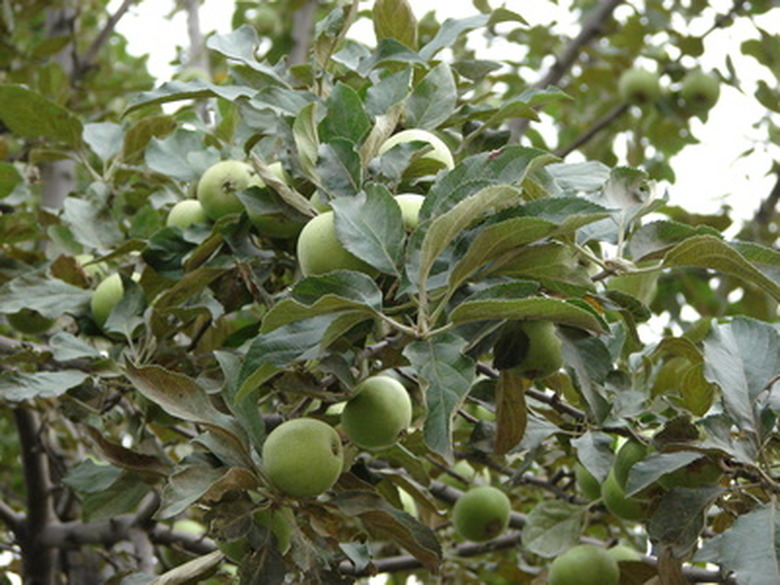How To Grow Apple Trees In Texas
Things Needed
- Shovel
- Apple tree sapling
- Bucket (optional)
- Anvil pruners
- 21-0-0 fertilizer
While Texas is typically known for its citrus and subtropical fruits, apple trees perform well in all areas of the state. Texas gardeners should plant container or bare-root apple trees in the spring, selecting a variety that performs well in their region of Texas. These cold hardy trees need no frost protection and will bear fruit reliably once established. To ensure maximum fruit production, plant two different types of apple trees for cross-pollination.
Step 1
Select an apple cultivar that performs well in Texas by buying a container apple tree from a local nursery. Texas A & M recommends the following cultivars for Texas gardeners: Gala, Fuji, Pink Lady, Jersey Mac, Granny Smith, Ozark Gold, Braeburn or Adina. Choose a container or bare-root apple tree that's 2 to 3 feet tall and 1 year old.
- While Texas is typically known for its citrus and subtropical fruits, apple trees perform well in all areas of the state.
- Texas gardeners should plant container or bare-root apple trees in the spring, selecting a variety that performs well in their region of Texas.
Step 2
Soak bare-root apple trees in a bucket of water for at least one hour before planting. If you have a container tree, skip this step.
Step 3
Choose a location that offers your apple tree full sun, since the trees need sun to ripen properly. Dig a hole twice the size of the apple tree's root ball.
Step 4
Pull your apple tree from its container. Break apart the root ball, removing soil clods and unwinding tangled roots. Trim the ends of any broken roots before planting.
- Soak bare-root apple trees in a bucket of water for at least one hour before planting.
- Break apart the root ball, removing soil clods and unwinding tangled roots.
Step 5
Place the apple tree in the prepared hole. Holding the tree straight, cover over the roots with soil, forming the soil around the roots and trunk of the apple tree.
Step 6
Water the newly planted apple tree until the soil becomes saturated with water.
Step 7
Prune back your apple tree to a height of 24 inches just after planting. Doing so promotes the development of strong, well-placed branches.
Step 8
Water the apple tree with 1 inch of water per week. In Texas, trees don't receive enough natural rainfall.
- Place the apple tree in the prepared hole.
- Water the newly planted apple tree until the soil becomes saturated with water.
Step 9
Fertilize the apple tree with 1 cup of 21-0-0 ammonium sulfate one month after planting. Scatter the fertilizer around the base of the tree, and water the ground to work it in. Repeat this dose twice more during the first year, in May and June. In Texas, apple trees only need supplemental nitrogen. During the second year, fertilize the tree in this manner again in April, May and June. For the third year, use 2 cups; for the fourth year, use 3 cups. In subsequent years, apply 1 lb. of 21-0-0 per inch of trunk diameter.
- Fertilize the apple tree with 1 cup of 21-0-0 ammonium sulfate one month after planting.
- During the second year, fertilize the tree in this manner again in April, May and June.
Step 10
Prune the tree into a vase system. Select three strong-looking branches around the base of the tree that grow out and up; remove all other branches. These three will become scaffold (or fruit-bearing) limbs. Trim off suckers growing from the trunk. The following year, prune suckers and competing branches. Remove offshoots that grow up from your scaffold limbs. Trim back the tips of the scaffold limbs to promote branching. Always prune in the dormant season, before the tree begins to grow in spring but after frost danger passes.
- Prune the tree into a vase system.
- Trim back the tips of the scaffold limbs to promote branching.
